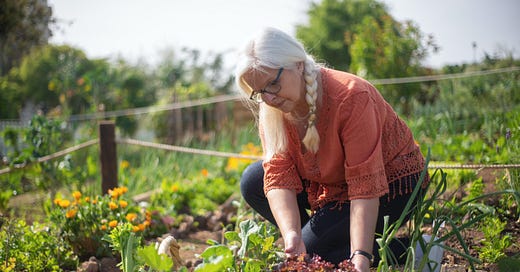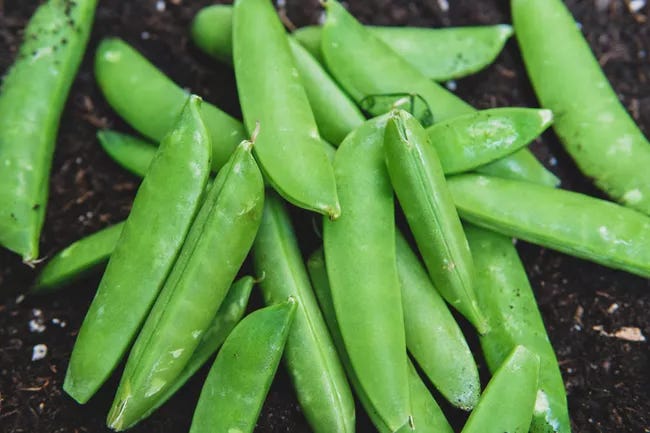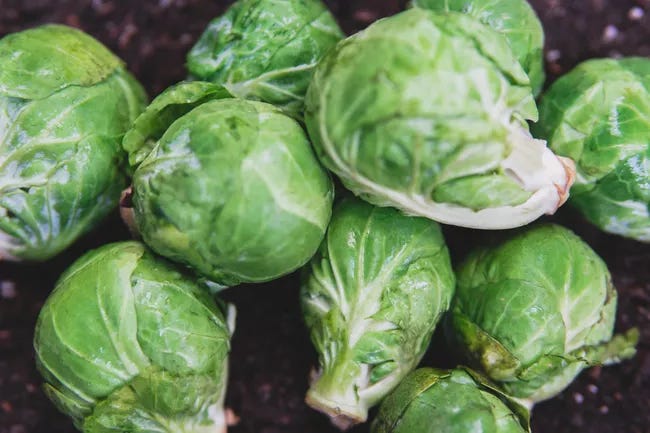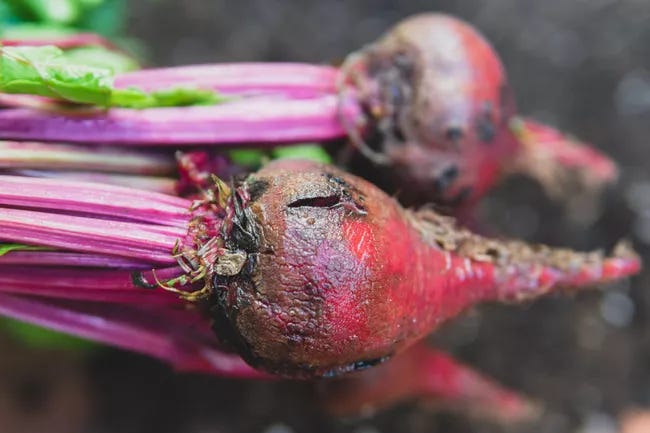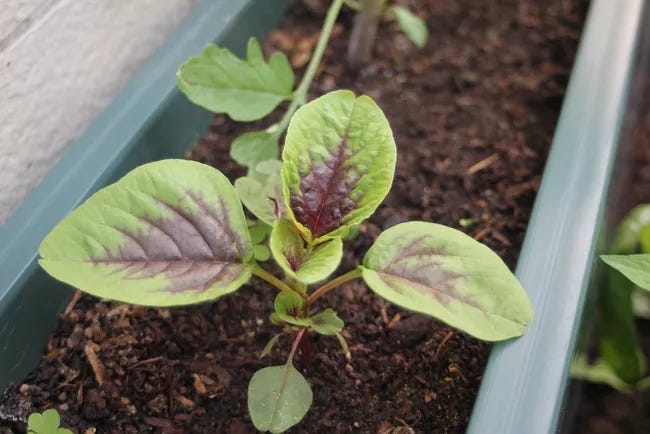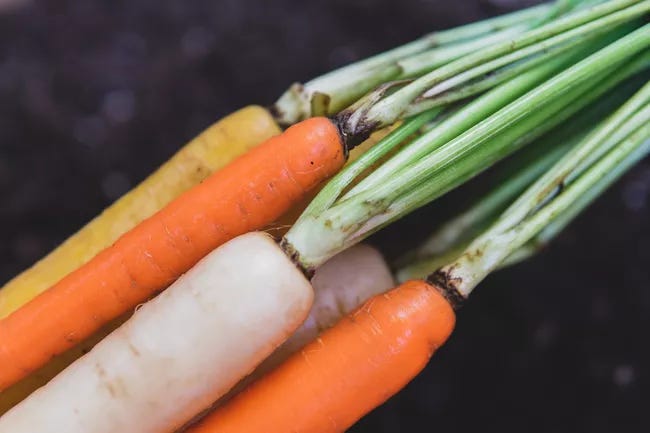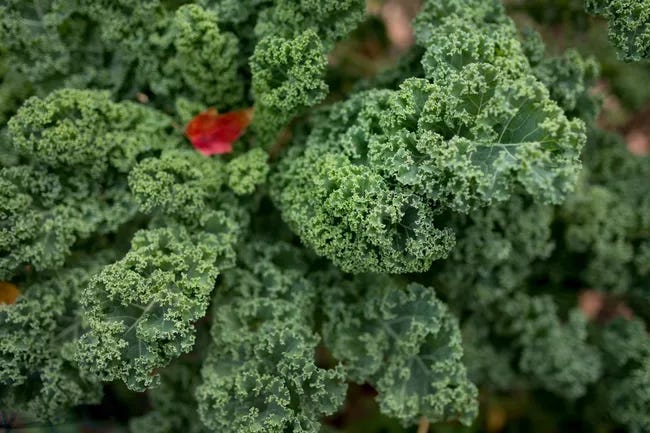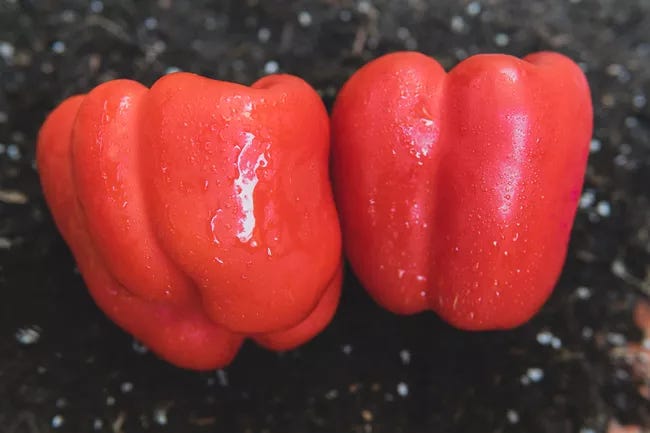Nothing beats the simple pleasure of foraging in your backyard for dinner vegetables. And while maintaining a home garden might seem like a lot of effort at times, it's often not as arduous as it appears. Plant the right seeds at the right time, and some easy garden vegetables will practically grow themselves. Plus, you can rest easy knowing that your veggies will always be freshly picked and free of pesticides.
Here are 10 vegetables that are perfect for a backyard garden, planters, or even a pot on a windowsill in a sunny apartment.
1. Peas
There is nothing like peas grown right in your own garden — the tender sweetness of a snap pea just plucked from the vine is unlike anything found in a supermarket. They're also a low-effort, high-yield garden vegetable, and a great choice for new gardeners. All you need is a container that is at least 10 inches deep and a trellis or cage for the plants to climb. They prefer cold weather, and once the heat of summer hits, pea plants will stop producing. If garden space is limited, you can pull them up and replace peas in the summer with another crop that likes the heat, such as bell peppers.
USDA Growing Zones: 3 to 11.
Sun Exposure: Full or partial sun.
Soil Needs: Well-drained, rich, loamy soil.
2. Brussels Sprouts
The bane of many a childhood, Brussels sprouts get a bad rap mostly due to overcooking. This sweet and tender vegetable can be grown in nearly any home garden with ample sunlight. They have a relatively long growing season, with some varieties taking up to 130 days to reach maturity. Their flavor improves if they are subjected to a frost, so in most climates, they can be planted in early summer and harvested in late fall after the first cold snap. However, they only tolerate a few days of freezing weather, so be sure to harvest them promptly.
USDA Growing Zones: 2 to 9.
Sun Exposure: Full sun.
Soil Needs: Rich, loamy, well-drained soil with organic matter.
3. Tomatoes
Fresh, homegrown tomatoes are the reason many people get into vegetable gardening in the first place. They have a reputation for being fussy, but if you know what to watch out for, growing tomatoes is generally hassle-free. Most importantly, tomatoes always grow best in warm to hot weather, and unexpected cold spells can do real damage. Grow seedlings inside at first and transfer them outdoors in May. As they grow, be sure to watch for signs of blight, which is an issue in many regions in the United States.
USDA Growing Zones: 3 to 9.
Sun Exposure: Full sun.
Soil Needs: Fertile, well-drained, loamy soil.
4. Beets
With beets, gardeners get two for the price of one — you can harvest the beet roots, of course, but you can also harvest and eat the greens. The roots are best when they are harvested small — between one and two inches across. At this size, they are sweet and tender. Larger beets tend to be woody and less flavorful. If grown in a container, they need a pot at least 12 inches deep. Because each beet seed is actually a cluster of seeds, be sure to thin the seedlings to one per cluster after they begin to sprout.
USDA Growing Zones: 2 to 11.
Sun Exposure: Full sun to partial shade.
Soil Needs: Well-drained, sandy soils rich in organic matter.
5. Leaf Amaranth
Lead amaranth is the rare leafy green that tolerates midsummer heat, when others like lettuce and spinach begin to bolt. The leaves of this less common vegetable have a sweet and tangy flavor that complements a variety of dishes. It's easy to grow — scatter the seeds in a garden plot or a container at least eight inches deep, and pluck the leaves when they grow two to four inches in size. It's a veritable superfood, and a source of calcium, iron, magnesium, phosphorous, potassium, riboflavin, zinc, and vitamins A, B6, and C.1
USDA Growing Zones: 2 to 11.
Sun Exposure: Full sun to partial shade.
Soil Needs: Rich, well-drained, loamy; can tolerate some dry soil.
6. Carrots
Growing carrots is a straightforward and simple, as long as you're comfortable with a little guesswork when it comes time to harvest. During planting, there are a few rules to live by — loose soil, cool weather, and lots of water. After the plants are established, add mulch on top of the soil can help conserve moisture. In general, it's time to harvest when the roots begin to rise and the tops of the carrots are visible, but this won't always happen. Most varieties will be mature and ready to dig up between 60 and 80 days after planting.
USDA Growing Zones: 3 to 10.
Sun Exposure: Full sun to partial shade.
Soil Needs: Rich, loose, well-drained; heavy soils should be mixed with compost.
7. Kale
Kale is a leafy green vegetable that grows quickly in cool weather. A cousin to cabbage and broccoli, it can be planted directly in garden soil as a seed, or grown indoors and transplanted. It can handle frost, which can actually improve the flavor of its leaves, but doesn't do well in summer heat, which causes it to bolt and grow bitter. It is especially easy to harvest, as you can cut the amount you need and leave the plant to regrow until your next harvest.
USDA Growing Zones: 2 to 9.
Sun Exposure: Full sun to partial shade.
Soil Needs: Rich, well-drained soil with organic matter; add all-purpose fertilizer.
8. Bell Peppers
Peppers are a tropical vegetable that requires good planning and a long growing season, but isn't fussy once it's in the ground. In colder environments, it's best to be careful about cold exposure, and plant them well after the last frost of the year. Watch for aphids and flea beetles, two common insect pests that target peppers. Both can be controlled with insecticidal soap, which is a common organic option; there are also natural homemade insecticides that are effective. Peppers can be grown in pots and moved indoors to be kept as a houseplant over the winter.
USDA Growing Zones: 4 to 11.
Sun Exposure: Full sun.
Soil Needs: Rich, well-drained, sandy soil; add all-purpose fertilizer.
9. Green Beans
There is really only one important rule to planting green beans — don't plant them too early. They won't survive a frost, which can cause the seeds to rot. They also tend to stop producing in the middle of the summer, but if you continue to water them, they will resume once the temperatures start to drop in early fall. The most time-intensive part of growing beans is in the harvest. The more beans you pick, the more the plant will grow, and mature beans that are on the vine too long can become tough and stringy.
USDA Growing Zones: 2 to 10.
Sun Exposure: Full sun.
Soil Needs: Any soil type that is well-drained with high organic content.
10. Broccoli
Broccoli is a cool-weather plant that grows best in spring and fall. It can be planted in early spring for a summer harvest, or in late summer to be harvested in fall. To avoid frost, broccoli can also be grown indoors and transferred to the garden when temperatures rise. For best results in a container, grow one broccoli plant per pot. Pots should be 12 to 16 inches deep.
When growing broccoli, be sure to watch out for cabbage worms: larvae of white butterflies that love feasting on cabbage heads. To prevent damage, cover your broccoli plants with floating row cover or lightweight bed sheets. If you start seeing cabbage worms, simply pick them off by hand.
USDA Growing Zones: 2 to 11.
Sun Exposure: Full sun (six to eight hours a day).
Soil Needs: Well-drained, moist, and slightly acidic; avoid sandy soil.
You can also read more articles about ‘How To Grow Your Own Food’:


